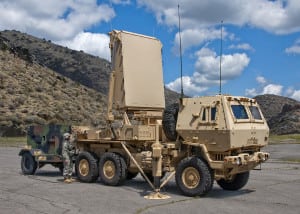Lockheed Martin’s [LMT] Q-53 Multi-Mission Radar (MMR) helped to successfully conduct a counter-unmanned aircraft system (C-UAS) mission during a recent demonstration with the Army, the company said on Oct. 27.
During the exercise at Yuma Proving Ground in Arizona in late summer, Lockheed Martin said the Q-53 was integrated with the Army’s Forward Area Air Defense Command and Control (FAAD C2) system and provided tracking data to launch
Raytheon Technologies’ [RTX] Coyote Block 2 counter-drone defeat system.

“The Q-53 radar has a long history of exceeding Army requirements and adapting to their evolving missions. This recent testing milestone reflects our ongoing commitment to enhance and upgrade the system capability,” David Kenneweg, Lockheed Martin’s program director for Army radars, said in a statement. “The Army’s Q-53 MMR can enhance air surveillance capabilities and integrate with C2 systems and broader weapon systems, enabling soldiers to detect threats and make decisions faster.”
The Army first fielded the Q-53 in 2010 and has used the advanced electronically-scanned array (AESA) radar, which can operate in 90- or 360-degree modes, to protect troops in combat by detecting and tracking enemy indirect fire threats such as artillery, mortars, or rockets.
In 2019, the Army awarded Lockheed Martin a new contract to deliver 15 Q-53s as well as a separate deal to enhance the radar’s counter-UAS capability with the ability to deliver “simultaneous counterfire, C-UAS and air surveillance” (Defense Daily, Aug. 5, 2019).
The Pentagon announced the Army’s new Q-53 contracting vehicle, with a ceiling value of $3.3 billion, in late March, noting the deal could cover “deployment to various foreign military sales countries” (Defense Daily, March 31).
Lockheed Martin previously told reporters the new Q-53 deal will include work to retrofit the radar fleet with Gallium Nitride (GaN) capability and integrating a digital antenna upgrade.
The GaN retrofit for Q-53 specifically supports extended range, increased power, while the digital antenna is intended to increase survivability by providing operators greater ability to work in contested environments.